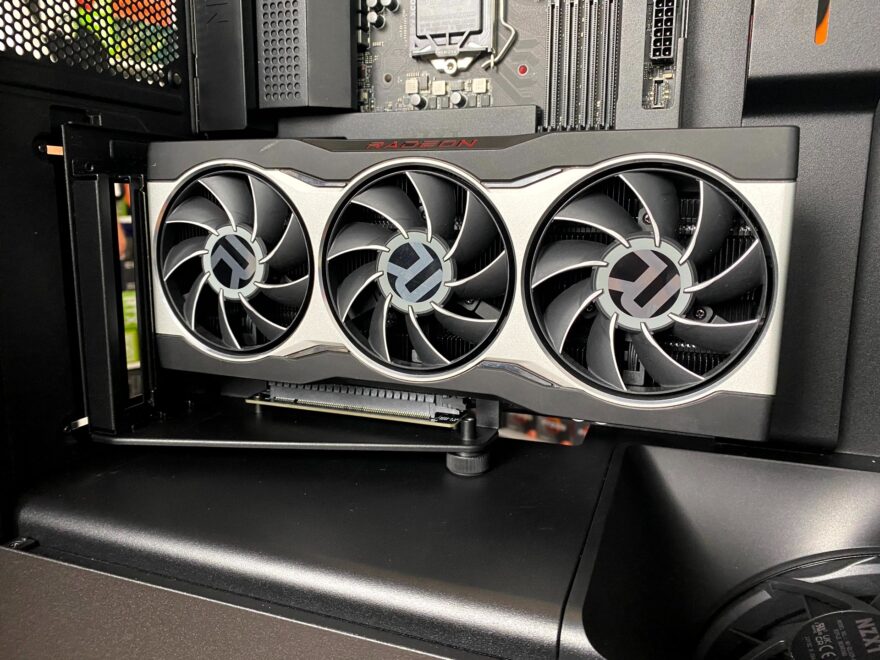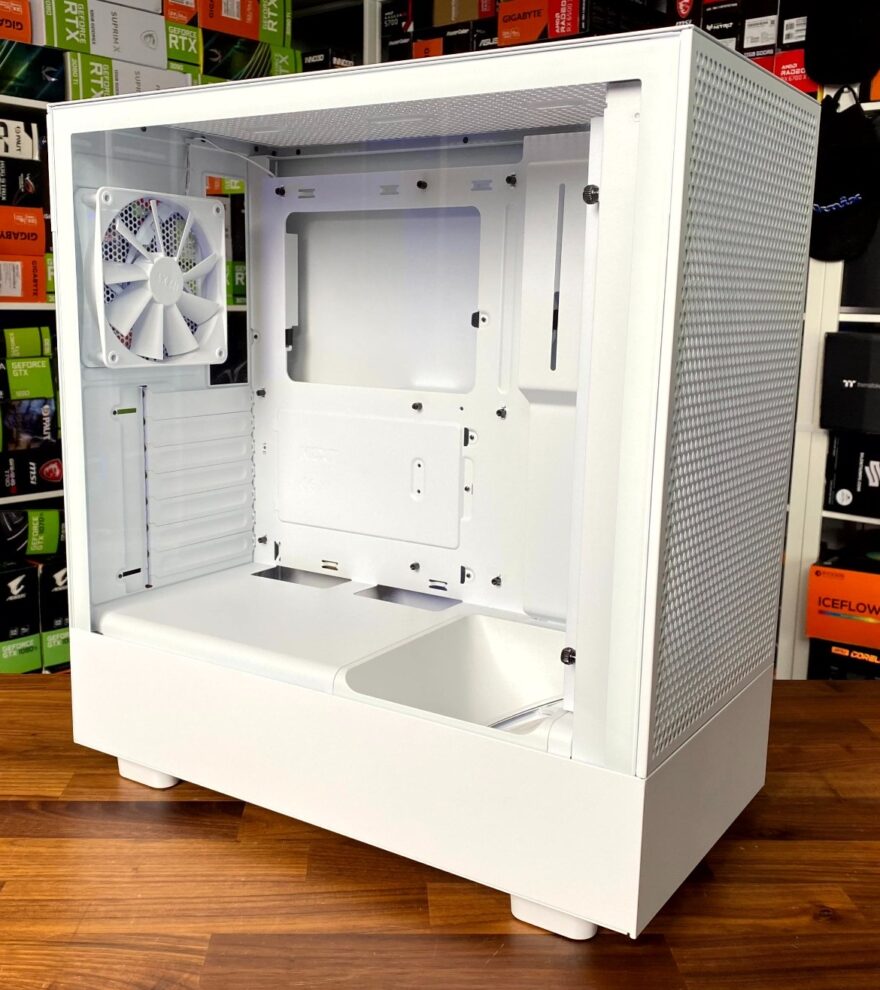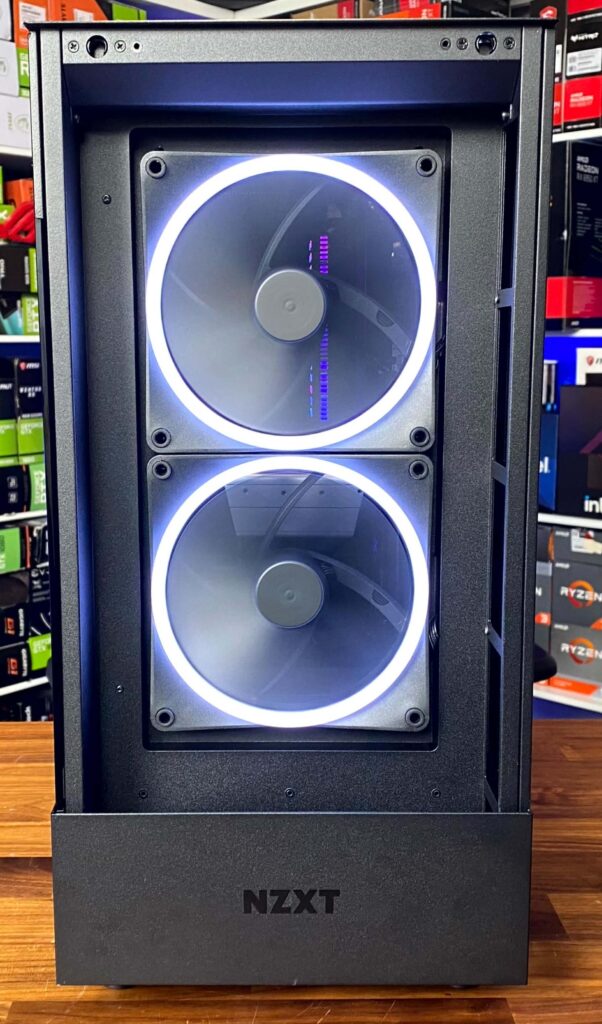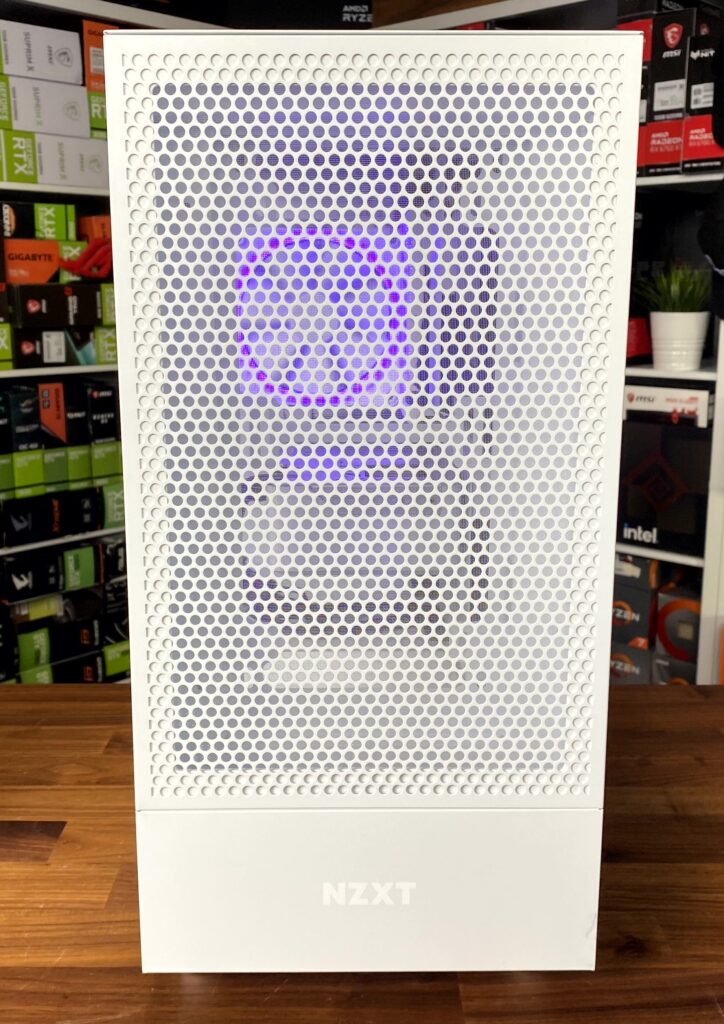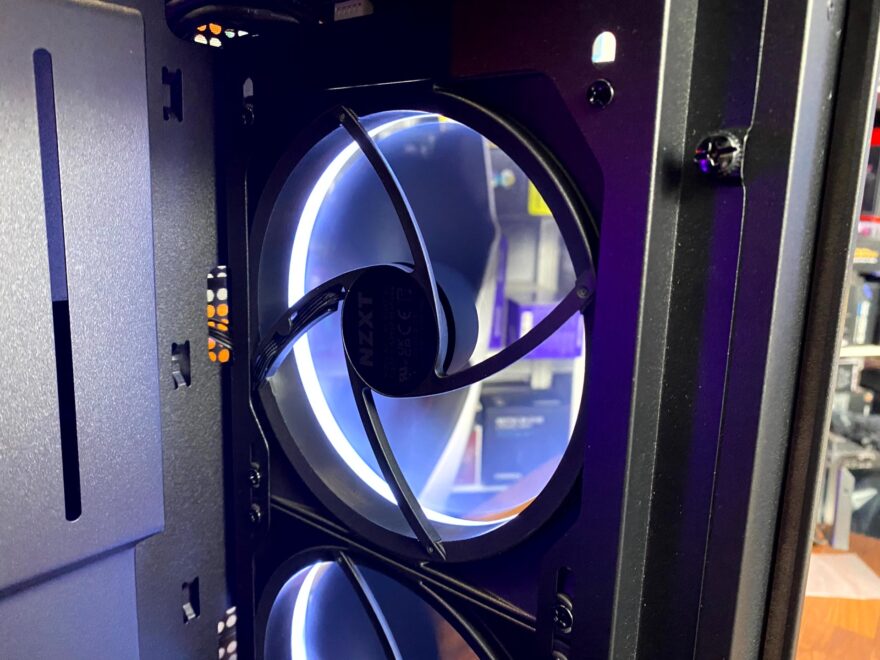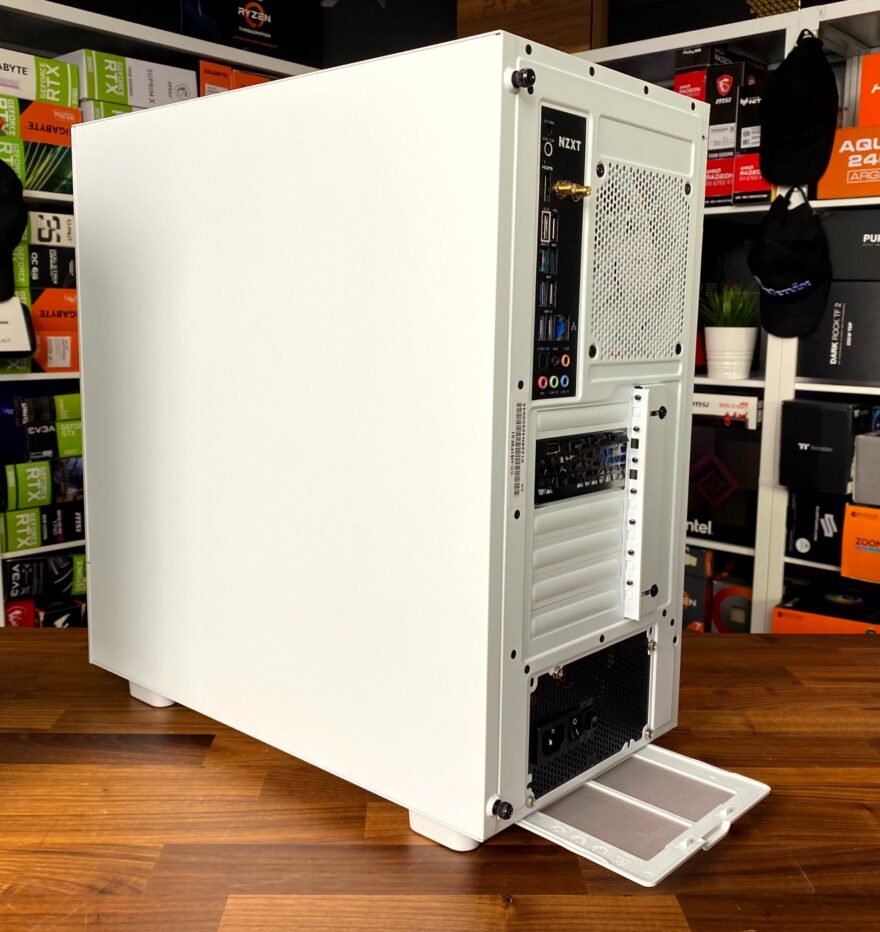NZXT H5 Flow & H5 Elite Case Review
Peter Donnell / 2 years ago
A Closer Look – Interior
Now when it comes to the inside, NZXT has utilised the space very well. Though it’s a small case, the inside just somehow feels bigger and comes with some pretty unique features like the angled fan which acts as a bottom intake which I’m going to say, I’ve never seen before and I’m kind of liking it. Whether it adds any function over style, we’ll see when we get to testing both cases later on, but from a style standpoint, it’s a winner in my book. Couple that with a 240mm AIO in the top and you’re laughing.
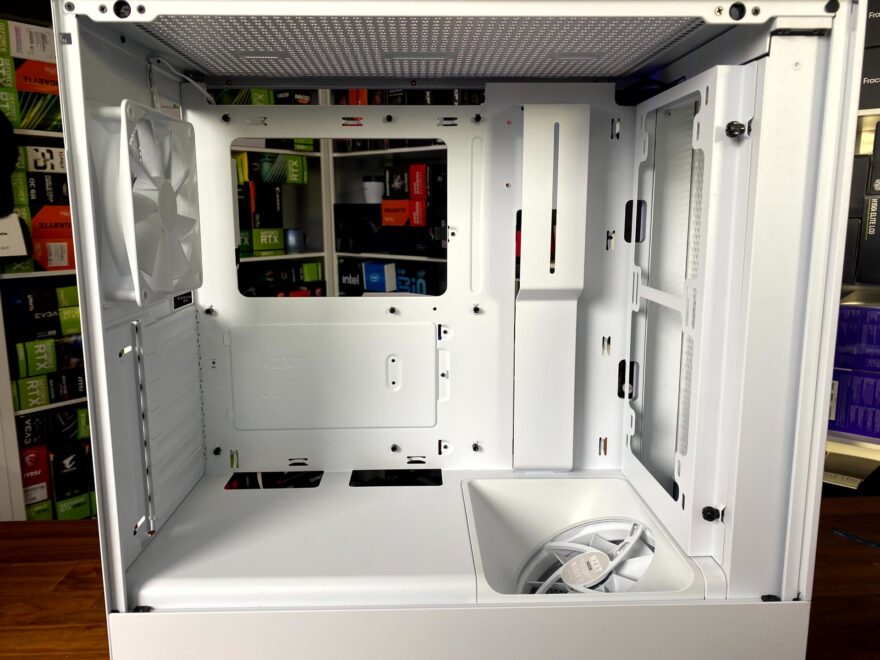
Now talking of cooling, you have some options with space for up to 2x140mm fans in the front, 2x 120mm in the top, a single 120mm in the rear and a single 120mm angled in the bottom.
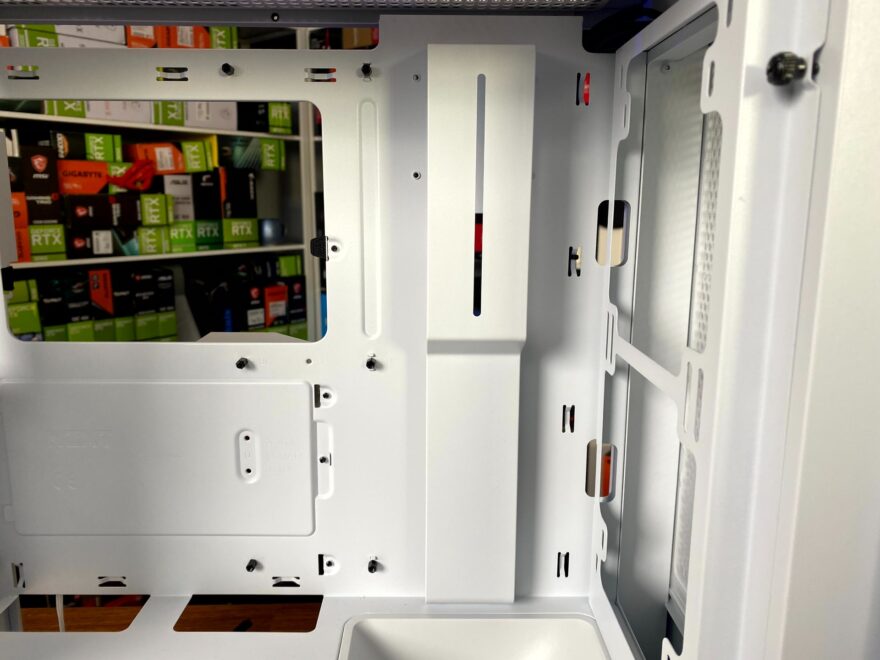
When it comes to pre-installed fans, the H5 flow comes with two F120Q fans, one in the rear and one in the bottom, while the H5 Elite comes with the same F120Q in the bottom, but mixes things up with two F140 RGB fans which are both installed in the front.
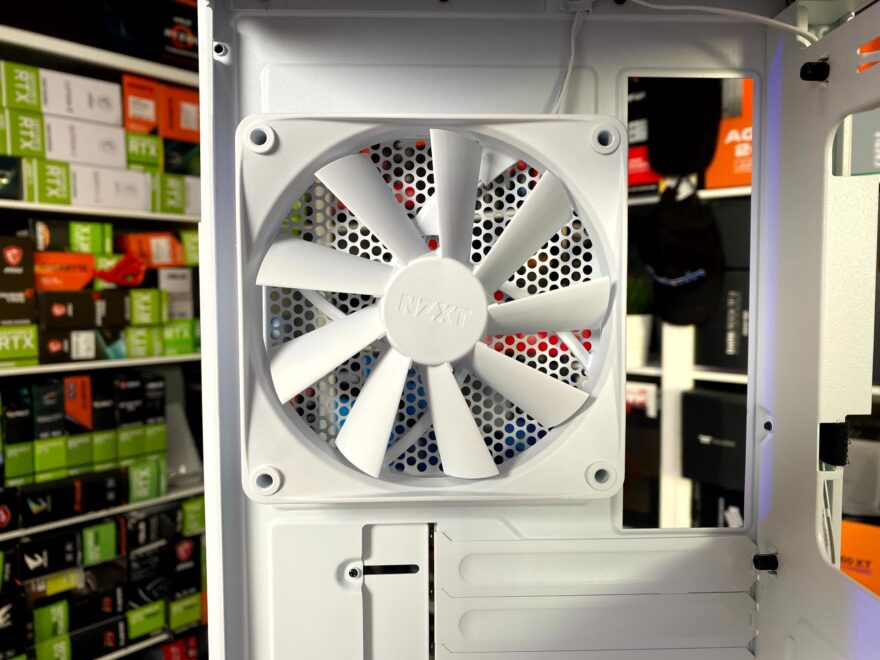
Now one area of criticism comes down to that angled 120mm fan which gets all of its airflow from the gap between the case and the surface it’s sitting on, whether that be a desk or the floor.
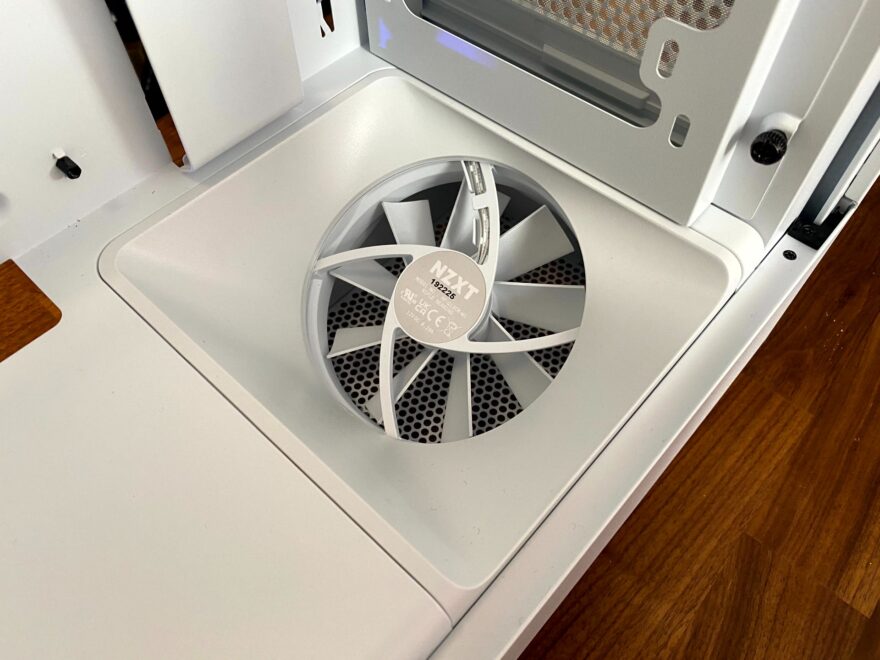
Now I’m not a case designer or engineer by any means, but surely having, at least on the flow version, a panel that was perforated here, would have assisted in airflow with a bit of a redesign as there’s almost like a wind tunnel angled down to assist with airflow.
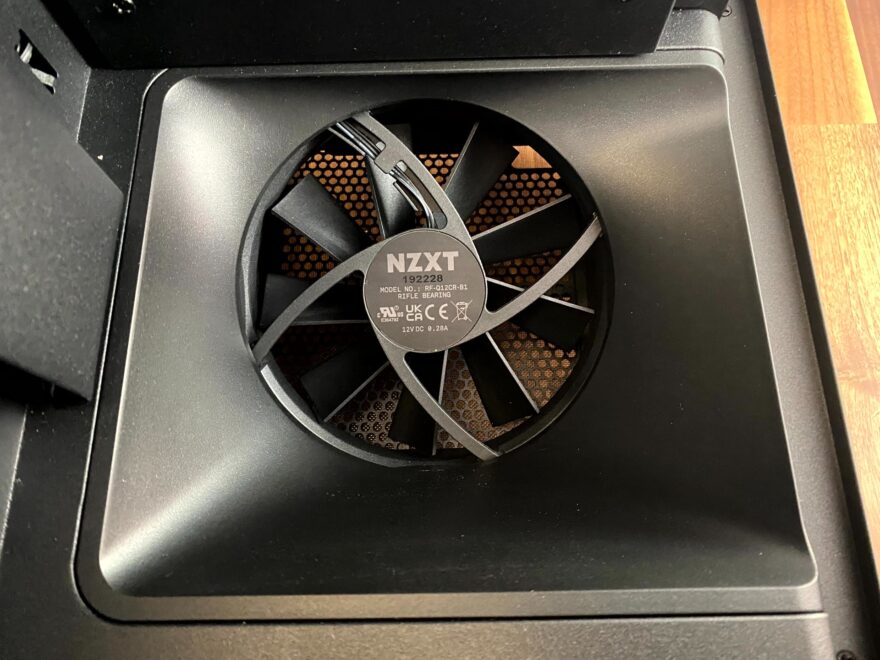
So sticking with airflow, I’ll be honest, and it’s been a big criticism of mine from the get-go, but the stock configuration on both the flow and the Elite is loud. It can all be controlled through NZXT CAM or your BIOS, but it just puts you off a bit when first building your system, but we’ll talk about acoustics and temperatures in a little bit.
Other control comes on the Elite with a built-in RGB controller that has three lighting channels which is great for adding in another device like the T120 RGB air cooler that we used, though that does come with an NZXT to aRGB adapter, which then begs the question why aRGB standard headers aren’t used in the first place.
For those wanting to install radiators, you have the ability to install up to a 280mm in the front, 240mm in the top and a 120mm in the rear. However, pump placement, unless using something like the EK Kinetic FLT D5, may be an issue. Another point is that if you’re adding a radiator into the front, you will lose space for your GPU so just be aware of that.
Around the rear, we still have a decent amount of cable management, which is expected from NZXT as they always seem to have a builder mindset when designing their cases, and we find plenty of tie-down loop points, including velcro ties and a lot of room for pushing cables out the way.
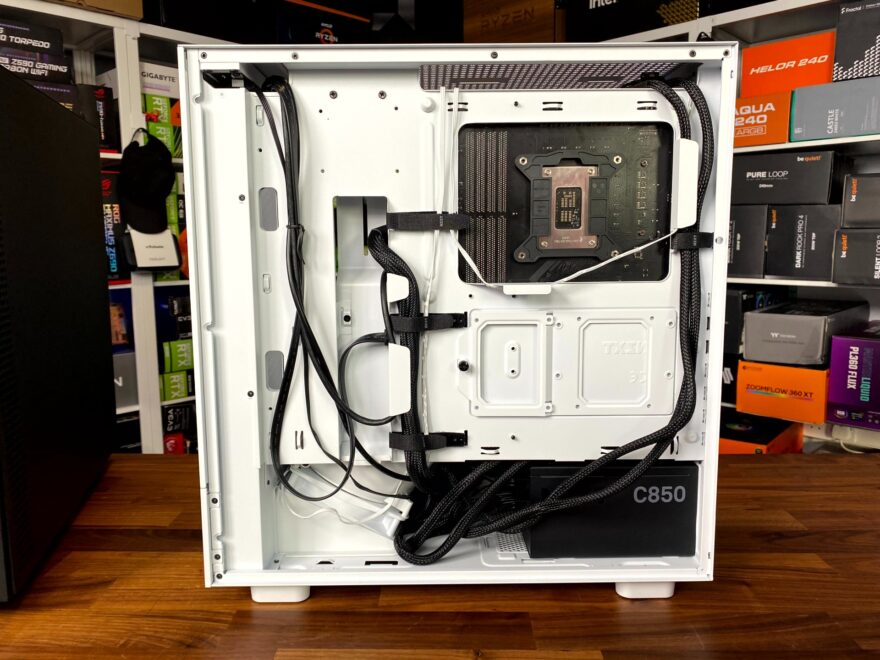
There’s also a removable bracket that can be used to install two 2.5” drives or a single 3.5” drive, which while it doesn’t sound like much, with the way that the market’s been heading as of late, it’s perfectly acceptable for a case of this size. There’s also enough room for power supplies up to 160mm in length with a good amount of room for cable management, though you could potentially fit a larger 185mm long PSU in, but may struggle with room for cables as it starts to feel a bit cramped with only 30mm or so left for cables.

Now two other things I want to touch on is that NZXT hasn’t taken my point on board about dust filters!
As we find a small one at the rear, below the PSU and the same towards the front while, like other brands, they could have just had a single dust filter spanning the whole bottom of the case, though it’s not a deal breaker by any means, just a weird observation by me.
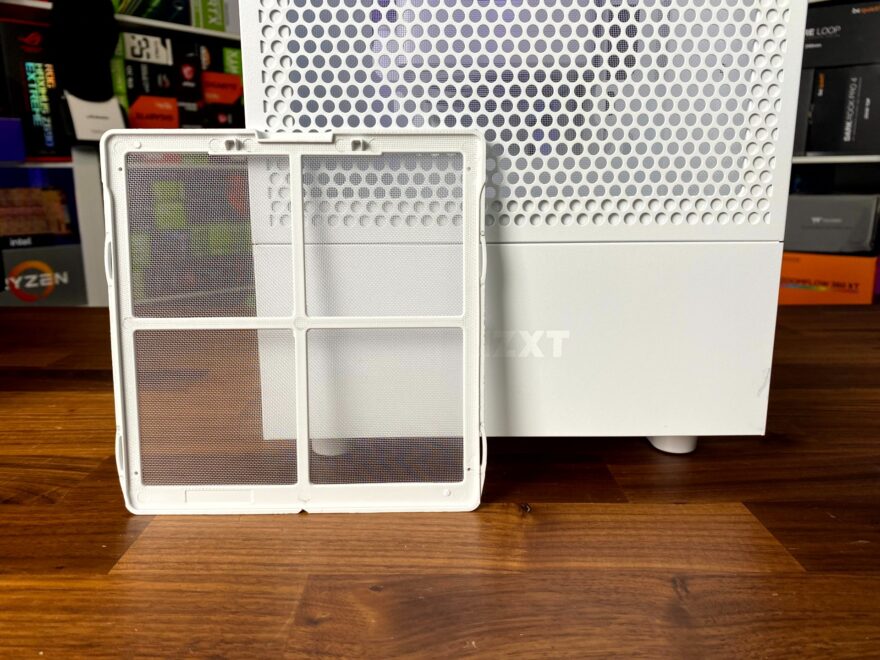
The other thing comes down to if wanting to vertically mount your GPU, which is possible, though you’ll need to buy NZXT’s vertical GPU mount.
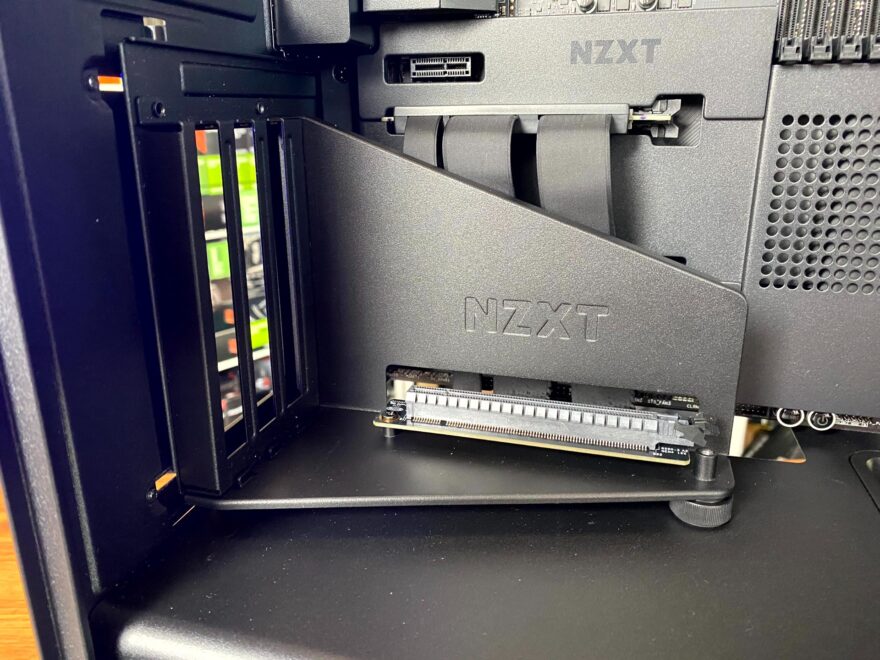
Though priced at $89.99 in the US and £75 in the UK, it’s almost as expensive as the H5 Flow itself which is coming in at $94.99 in the US while the Elite comes in at $139.99 which is perfectly reasonable compared to similar cases on the market from Corsair and other leading brands.
